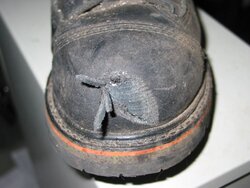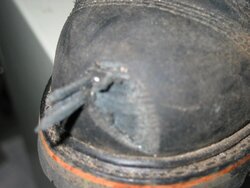Adios Pantalones
Minister of Fire
LOL
Had a severe tree hung up a few weeks ago that required attaching my Subaru via chain and several running starts. Yesterday I realized that there were a few decent dead branches still hung up in adjacent trees- Yikes!
I don't process a huge amounts of wood, but I don't see how people have a few/several accidents in a season. I get sloppier later in the day so I take regular breaks (like after each tank of gas- go get some water, sit down, collect myself).
First line of defense is always thinking before you do something. PPE is important, but second at best. I'm becoming a firm believer that regular breaks are probably saving me blood (quick touch up on the chain, get water ad a snack, sit with the dogs).
Had a severe tree hung up a few weeks ago that required attaching my Subaru via chain and several running starts. Yesterday I realized that there were a few decent dead branches still hung up in adjacent trees- Yikes!
I don't process a huge amounts of wood, but I don't see how people have a few/several accidents in a season. I get sloppier later in the day so I take regular breaks (like after each tank of gas- go get some water, sit down, collect myself).
First line of defense is always thinking before you do something. PPE is important, but second at best. I'm becoming a firm believer that regular breaks are probably saving me blood (quick touch up on the chain, get water ad a snack, sit with the dogs).



